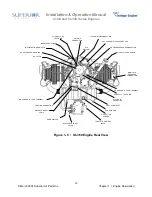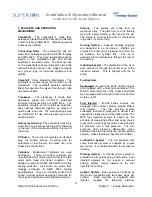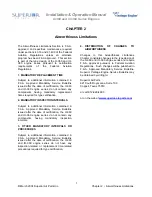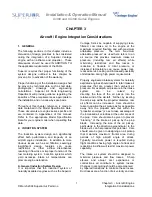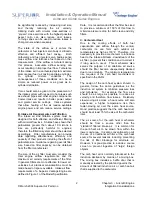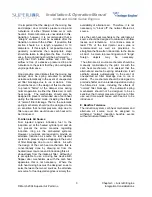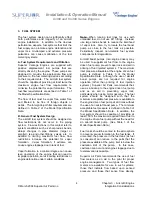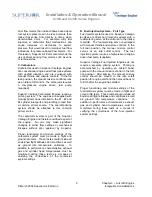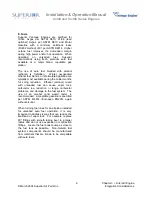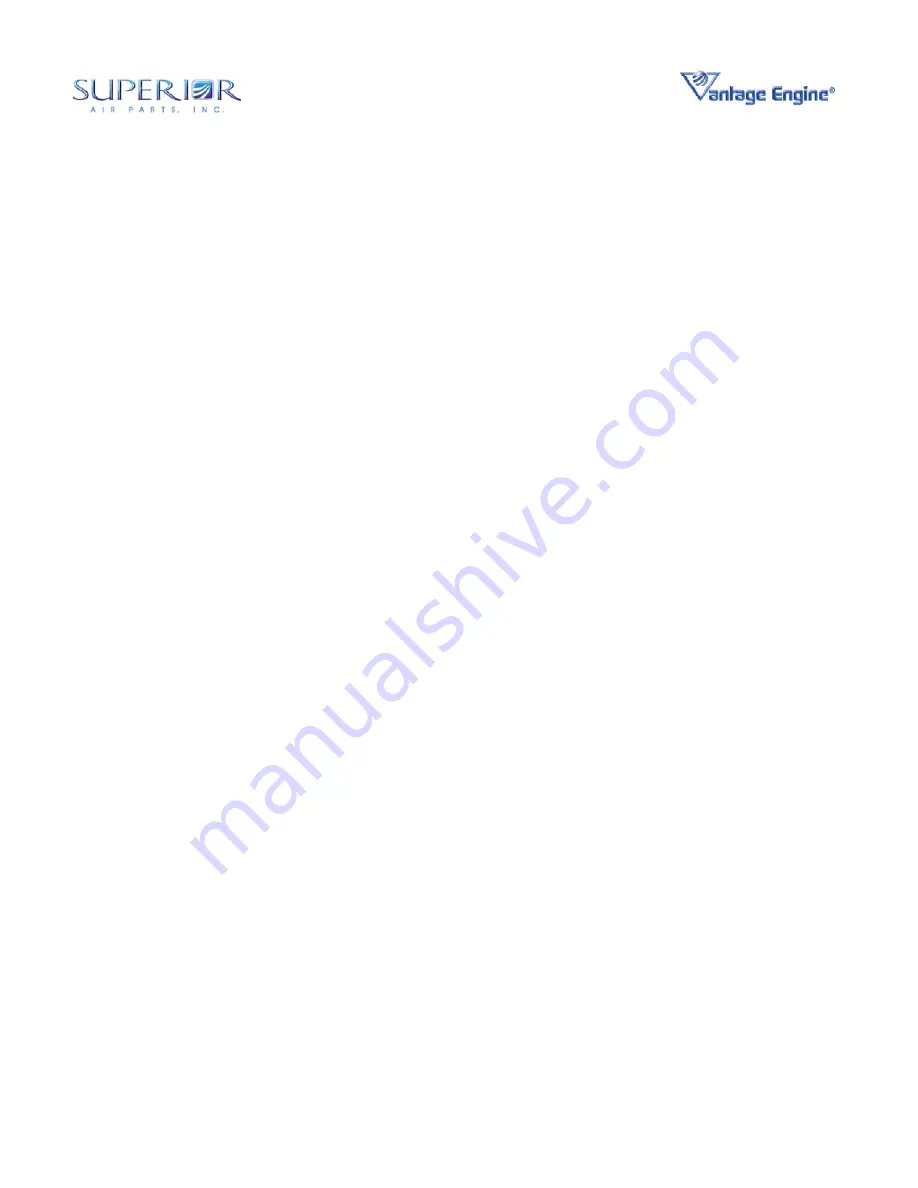
Installation & Operation Manual
O-360 and IO-360 Series Engines
12 Chapter 3 • Aircraft / Engine
© March 2004 Superior Air Parts Inc. Integration Considerations
6. LUBRICATION SYSTEM
The engine lubrication system is responsible for
the reduction in friction between components,
removal of combustion by-products and other
contaminants, and the removal of heat from
internal engine components. A continuous
supply of clean, cooled oil of the proper grade
and specification is essential to this process.
Failure to do so can result in a wide variety of
problems ranging from increased wear to engine
stoppage.
A. Lubricating Oil Requirements
Superior recommends the use of high quality
100% mineral oil during the break-in period.
After engine break-in, high quality ashless
dispersant engine oil per MIL-L-22851 or SAE J-
1899 should be used in Superior Vantage
Engines. Ashless dispersant oils are used to
prevent the formation of sludge, aid in the
neutralization of corrosive acids and prevent ash
deposits on cylinder walls that can become hot
spots and sources for pre-ignition. The grade or
viscosity of oil should be chosen based upon the
climate where the engine will be operated as
shown in Table 8-1.
Superior Vantage Engines are provided with a
suction screen filter, sometimes referred to as a
“finger filter” to prevent large contaminants from
being drawn into the pressurized portion of the
oil system. In addition, Superior Vantage
Engines are provided with a full-flow oil filter to
maintain contaminant free oil and promote long
engine life. Superior recommends changing the
full-flow oil filter, inspecting / cleaning the suction
screen filter and changing the oil in accordance
with published maintenance schedules.
In addition to clean oil of the proper viscosity, it
is important to ensure that the oil is free of
aeration and foam in the pressurized portion of
the oil system. This can become an issue at
high altitudes as the vapor pressure of the oil
exceeds the ambient pressure. Severe aeration
within the anticipated flight altitudes of a
Superior Vantage normally aspirated engine, but
must be verified through flight testing.
B. Lubricating System Components
The lubricating system of Superior Vantage
Engines is composed in general of an oil sump
or reservoir, an oil cooler circuit, an internal
pressurized circuit and for installations with
constant speed propellers a propeller governor
circuit. A schematic of the lubricating system is
provided in Figure 3-1.
(1.) Oil Sump
Superior Vantage Engines utilize a “wet sump”
design. That is, the engine oil sump is the
primary reservoir for engine oil as opposed to a
remote reservoir as is done in many aerobatic
installations. However, provisions exist to attach
an aerobatic oil system to the Superior Vantage
Engine if desired. For more information
regarding aerobatic installations contact
Superior Air Parts.
The maximum capacity of the oil sump is 8 U.S.
quarts. Oil quantities in excess of this amount
can cause loss of engine efficiency due to
“splashing” and fluid drag of internal
components through the oil and also “pumping”
of the oil out the crankcase breather fitting.
Minimum oil capacity is governed by the ability
of the oil pump to draw full oil (i.e. no entrained
air) from the sump in various flight attitudes.
(2.) Oil Pump and Pressure Control Valve
Superior Vantage Engines employ a high flow,
positive displacement gear pump to provide oil
throughout the engine. The pump is capable of
producing oil flow and pressure values much
higher than those required by the engine as a
safety measure to ensure that the necessary oil
is always available to the engine. Because of
this, a pressure control valve is used to govern
the maximum oil pressure in the system. Oil
pressures that are too high will promote external
leaks that would not otherwise occur.
The oil pressure control valve is adjustable so
that the operator may ensure that the oil
pressure is within specified limits. If oil pressure
under normal operating conditions always
exceeds the maximum or minimum specified
limits as defined in Table 5 of the Model

